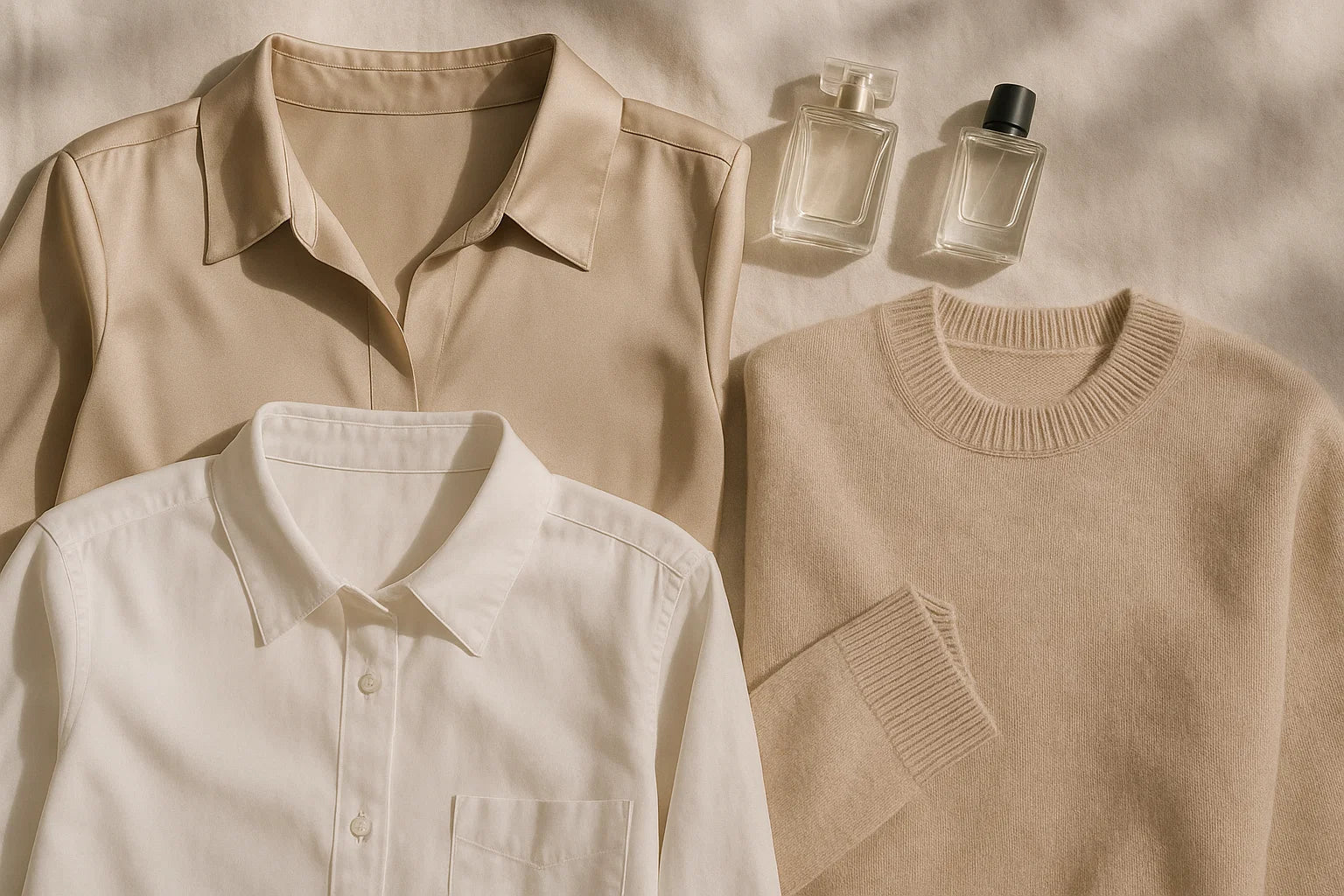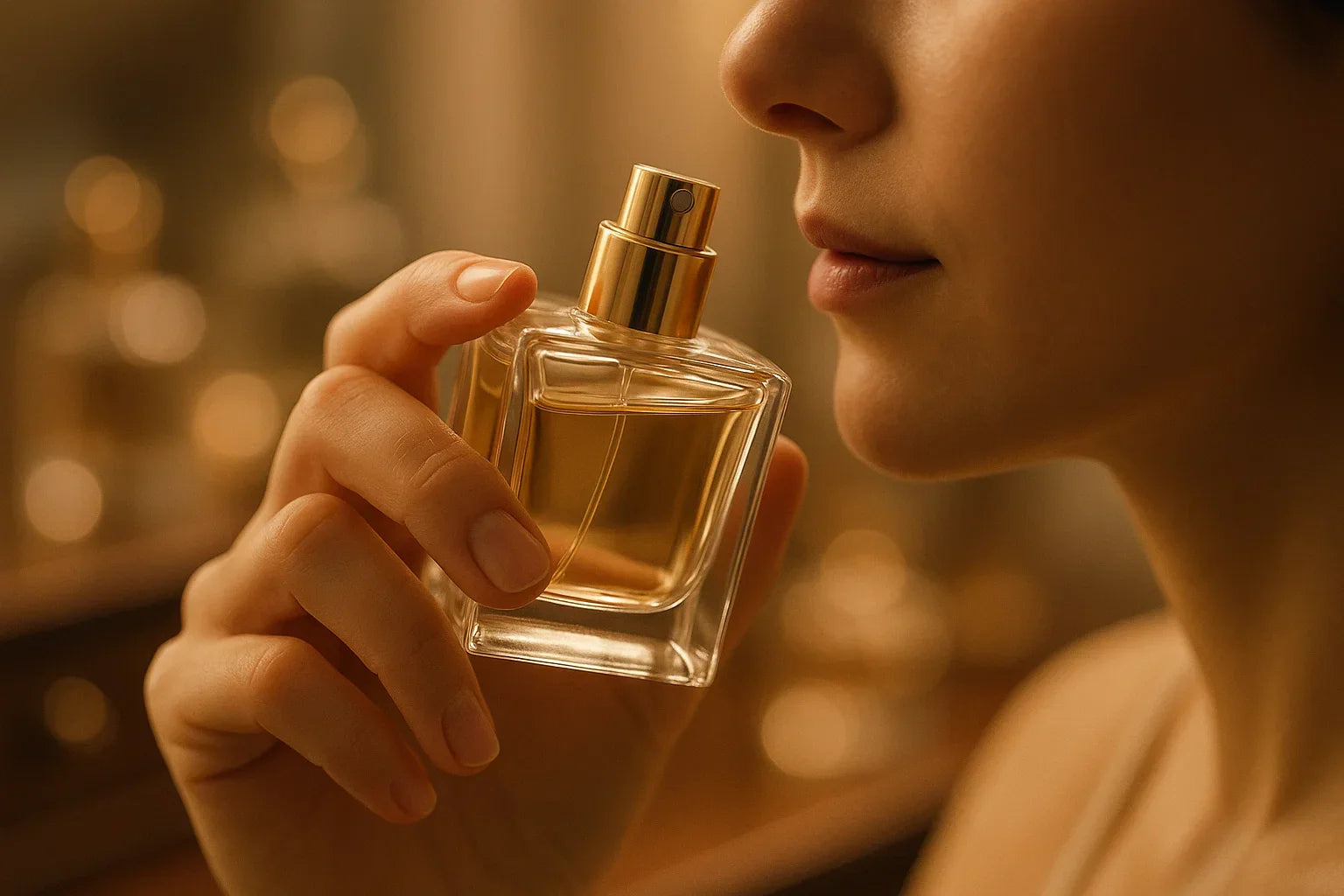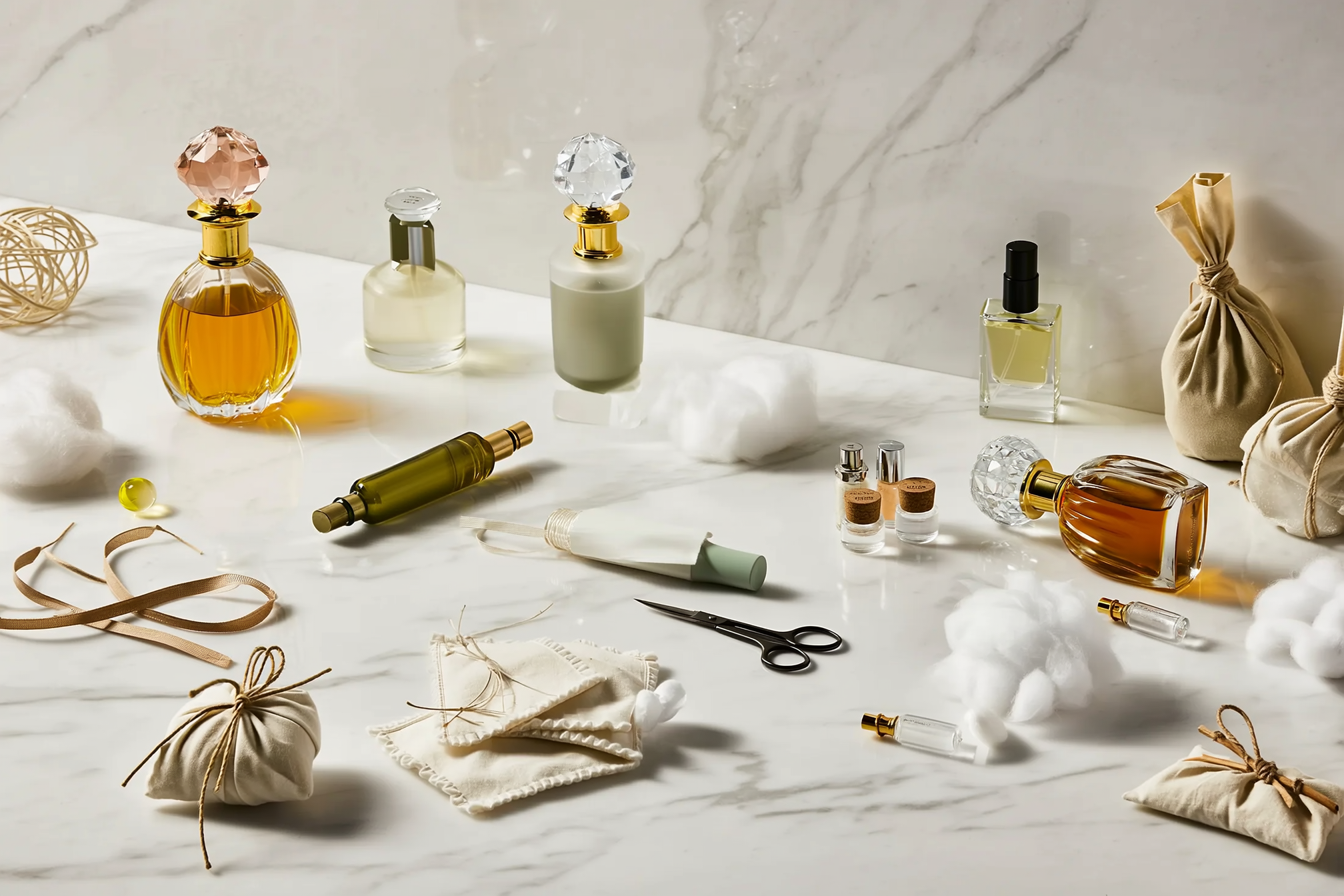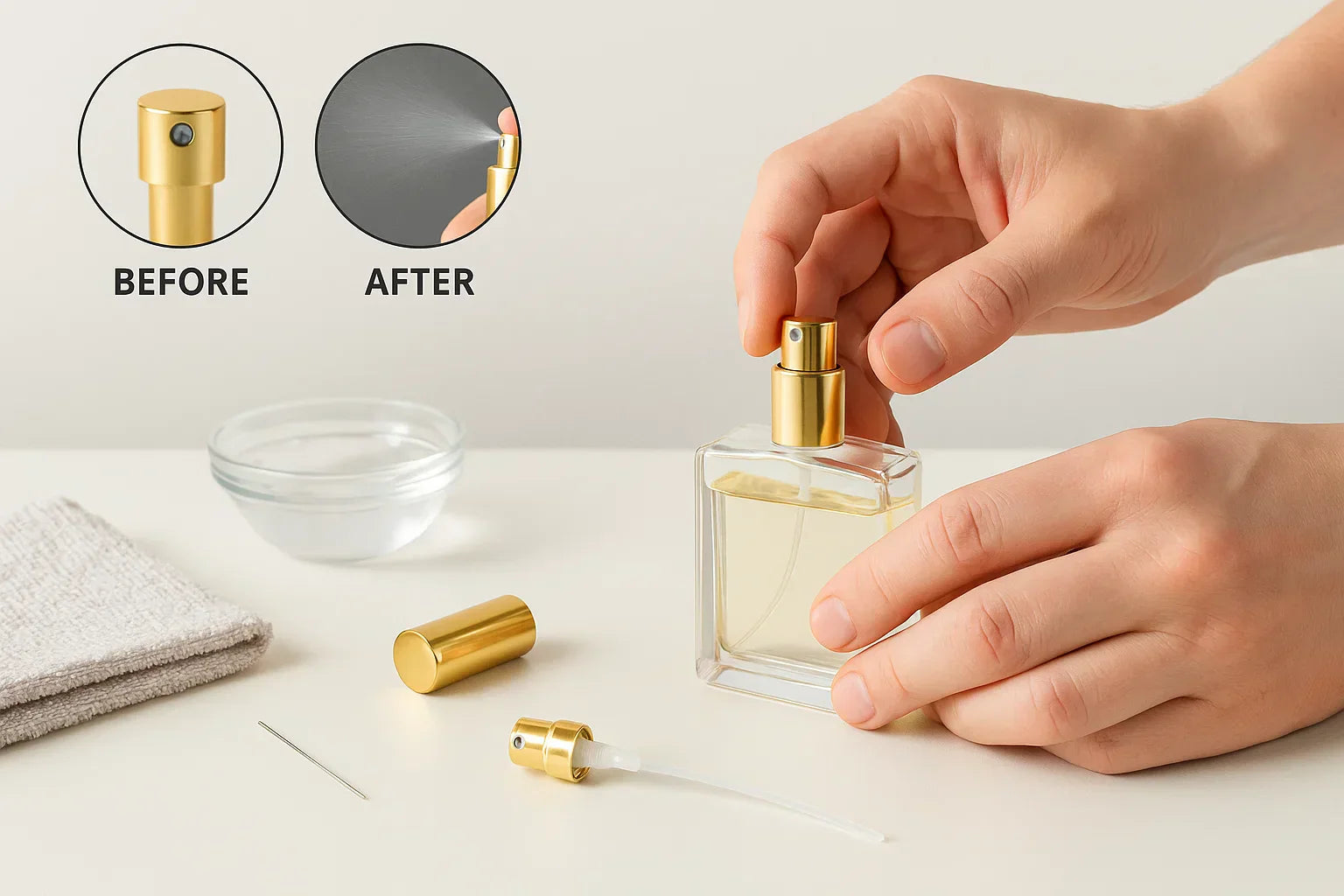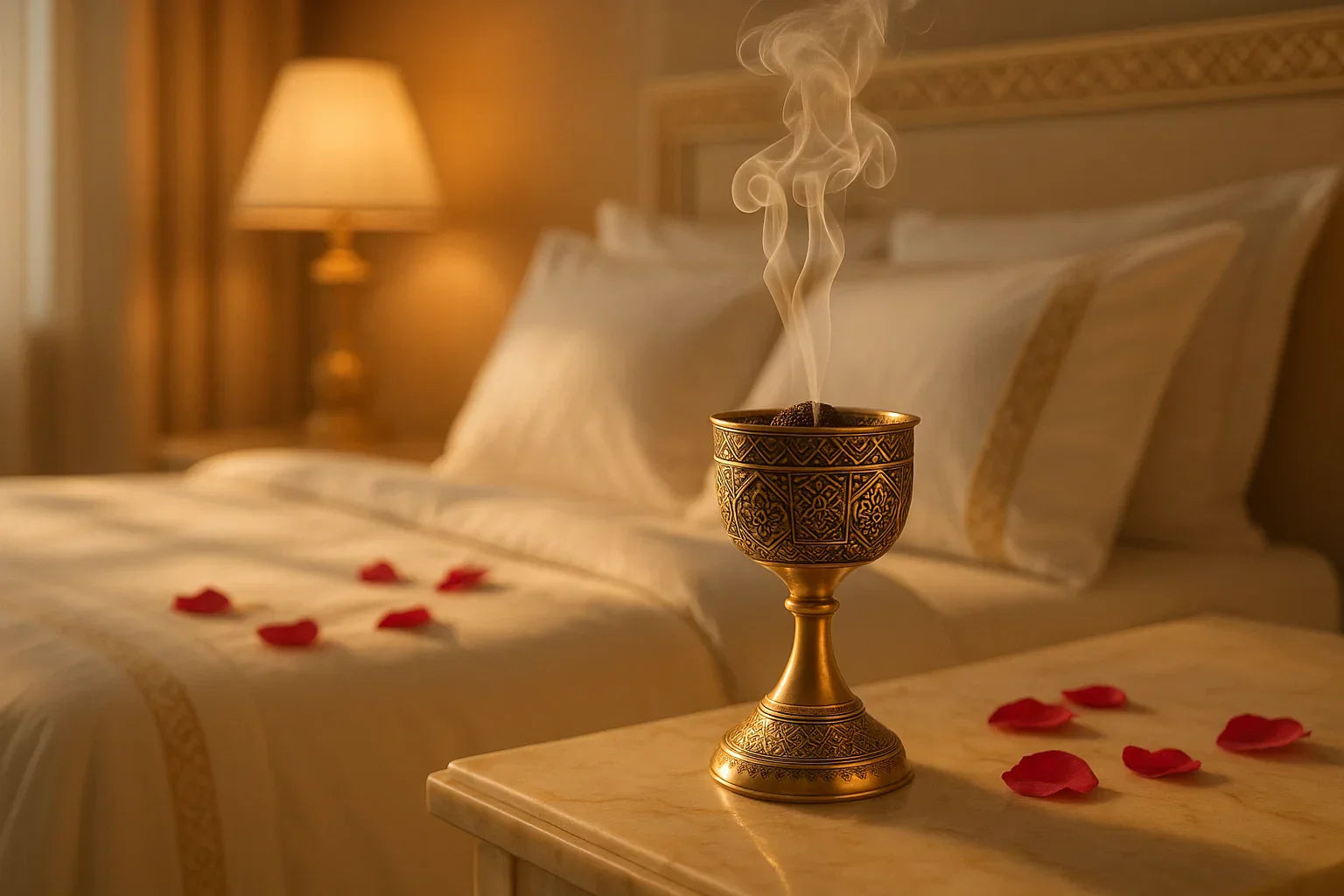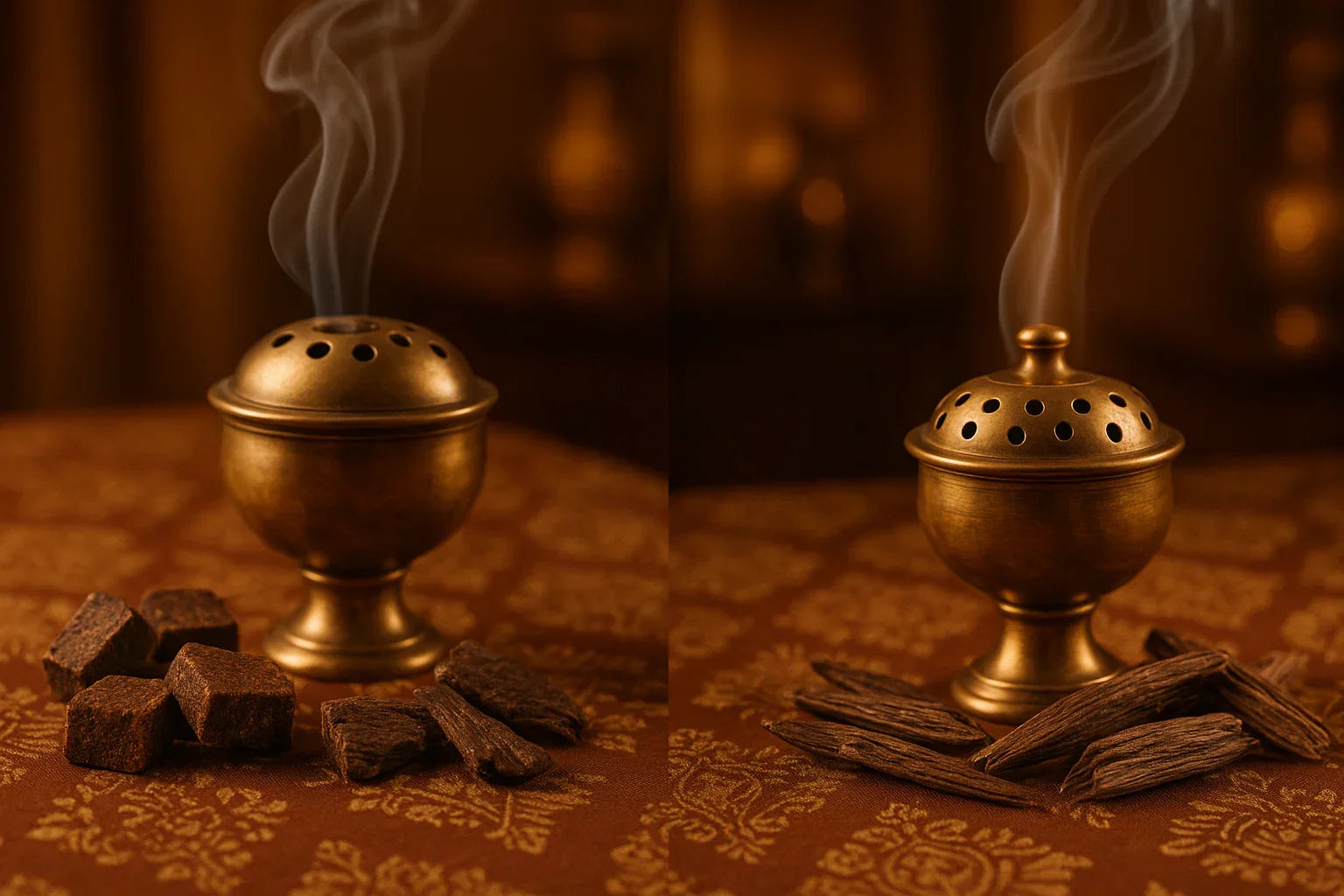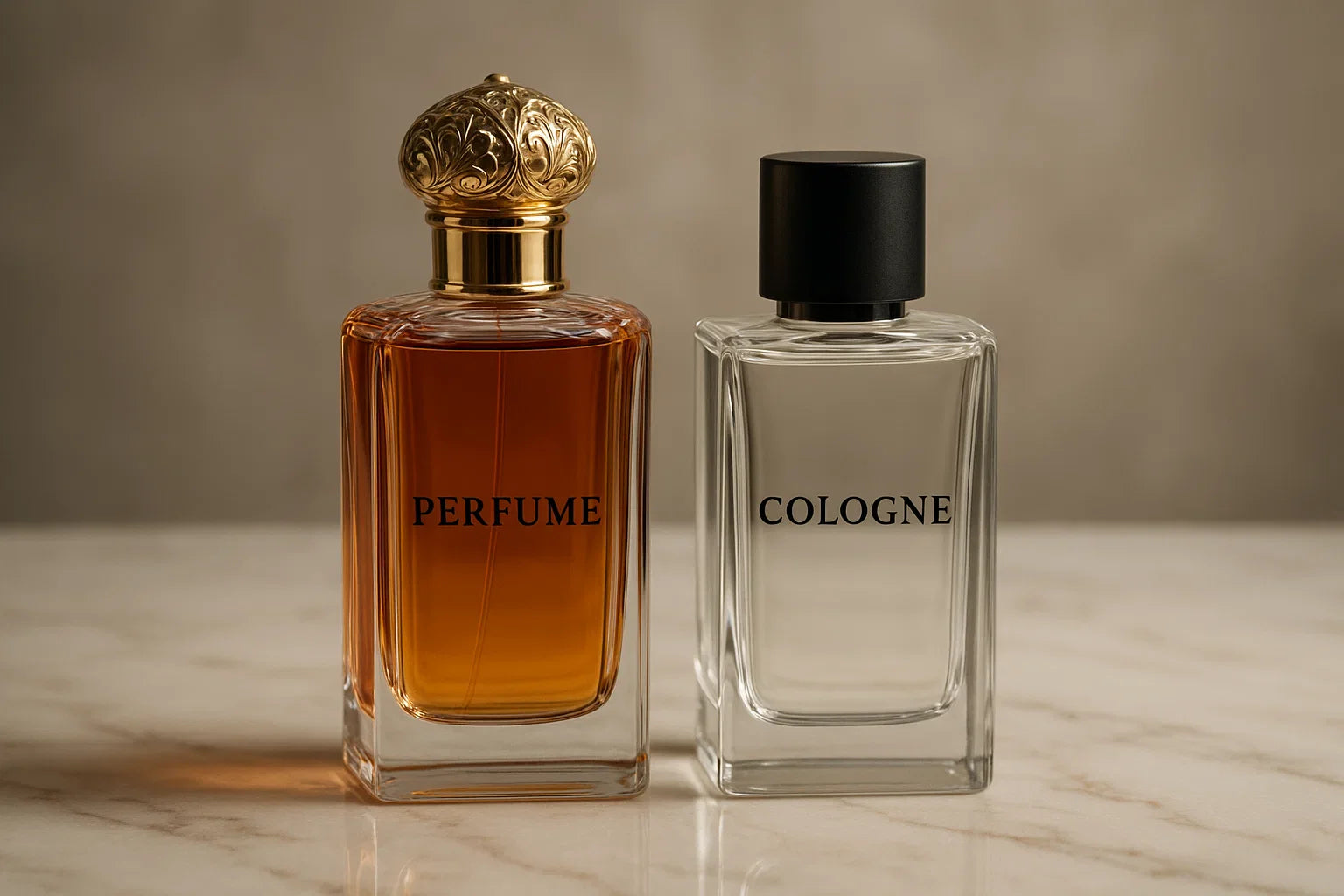
Difference Between Cologne and Perfume: A Complete Guide
Introduction
Have you ever wondered why some fragrances seem to vanish within hours while others linger all day? Or why certain scent bottles come with heftier price tags? The answer lies in understanding the fundamental difference between cologne and perfume. These aren't just marketing terms—they represent distinct fragrance categories with varying concentrations, longevity, and purposes.
Many fragrance enthusiasts mistakenly use these terms interchangeably, leading to confusion when shopping for the perfect scent. Whether you're a fragrance connoisseur or just beginning your aromatic journey, knowing these differences will empower you to make more informed choices and find fragrances that truly complement your lifestyle and preferences.
The History of Perfumes and Colognes
The journey of fragrances begins thousands of years ago, with evidence of perfumery dating back to ancient Mesopotamia and Egypt. However, the distinction between cologne and perfume emerged much later in fragrance history.
Perfume's Ancient Origins
Perfume (from Latin "per fumum" meaning "through smoke") began as burned resins and herbs in religious ceremonies. The Egyptians were particularly skilled perfumers, creating scented oils for both religious and personal use. By 1000 BCE, perfumery had become a sophisticated art form, with dedicated perfumers creating signature scents for royalty and nobility.
The Birth of Cologne
Cologne has a more recent history, tracing back to 1709 when Italian perfumer Giovanni Maria Farina created a light, refreshing scent while living in Cologne, Germany. He named his creation "Eau de Cologne" (water from Cologne) — a citrusy, herbal blend designed to remind him of an Italian spring morning. This revolutionary lighter fragrance quickly gained popularity throughout Europe, particularly among men who found traditional perfumes too intense.
The Middle Eastern contribution to fragrance history cannot be overlooked, as Arabic perfumers developed techniques for extracting oils and preserving scents that revolutionized the industry. Their expertise with oud and other precious ingredients continues to influence modern perfumery.

Key Differences Between Cologne and Perfume
Concentration Levels
The most significant difference between cologne and perfume lies in their concentration of fragrance oils:
- Perfume (Parfum): Contains the highest concentration of aromatic compounds (15-30%), resulting in the most potent and long-lasting fragrance.
- Eau de Parfum (EDP): Features 15-20% aromatic compounds, offering excellent longevity with slightly less intensity.
- Eau de Toilette (EDT): Contains 5-15% aromatic compounds, creating a lighter scent that lasts 3-4 hours.
- Eau de Cologne (EDC): Has only 2-4% aromatic compounds, providing a refreshing but brief fragrance experience.
- Eau Fraiche: The lightest option with just 1-3% aromatic compounds, lasting only 1-2 hours.
The term "Eau de Parfum" refers to a specific concentration level of fragrance oils, typically ranging from 15-20%. This concentration gives EDPs their characteristic strength and longevity, making them popular choices for those seeking lasting scent without the intensity of pure parfum.
Longevity
Due to these concentration differences, perfumes and colognes vary dramatically in how long they last:
- Perfume/Parfum: 6-8 hours (sometimes longer)
- Eau de Parfum: 4-5 hours
- Eau de Toilette: 2-3 hours
- Cologne: 2 hours or less
This explains why that expensive perfume stays with you throughout the day, while cologne might require reapplication after lunch.
Gender Associations
Historically, colognes have been marketed primarily to men, while perfumes were considered more feminine. However, contemporary perfumery has largely moved beyond these rigid gender distinctions. Today, the terms relate more to concentration than gender, with many brands offering unisex options across concentration levels.
In the world of oud fragrances, traditional gender distinctions are even less prominent. Oud perfumes, with their rich, complex character, are equally appreciated by men and women, especially in Middle Eastern cultures where the appreciation for this precious ingredient transcends gender norms.

Fragrance Concentration Levels Explained
Understanding concentration helps explain why perfumes cost more than colognes—they contain significantly more fragrance oils and less alcohol or water as carriers.
Composition Breakdown
For a typical 100ml bottle:
- Perfume/Parfum: 20-30ml fragrance oils + 70-80ml alcohol/water
- Eau de Parfum: 15-20ml fragrance oils + 80-85ml alcohol/water
- Eau de Toilette: 5-15ml fragrance oils + 85-95ml alcohol/water
- Cologne: 2-4ml fragrance oils + 96-98ml alcohol/water
These differences in composition directly impact not just longevity but also how the fragrance develops on your skin throughout the day.
Fragrance Development
Higher concentrations don't just mean longer-lasting scents—they also allow for more complex development over time:
- Top Notes: The initial impression that evaporates quickly (citrus, light florals)
- Middle/Heart Notes: The essence of the fragrance that emerges after 10-30 minutes
- Base Notes: The foundation that remains for hours (woods, resins, musks)
Understanding fragrance notes is crucial for appreciating how scents develop. The top notes create the first impression, heart notes form the core personality, and base notes provide the lasting foundation of any fragrance, regardless of whether it's a cologne or perfume.
Colognes often emphasize bright, refreshing top notes but might lack the complex base notes found in perfumes, which explains their shorter lifespan on the skin.

Application Methods for Different Fragrance Types
The difference between cologne and perfume extends to how they should be applied for optimal performance:
Perfume Application
With higher concentrations, less is more:
- Apply to pulse points (wrists, neck, behind ears)
- 1-2 sprays is typically sufficient
- Avoid rubbing wrists together (this crushes the molecules)
- Apply to moisturized skin for better longevity
Cologne Application
Due to lower concentration, application can be more liberal:
- More coverage is needed (4-6 sprays)
- Can be applied to clothing (though may stain delicate fabrics)
- Reapplication throughout the day is expected
- "Spray cloud" method works well (spray in the air and walk through)
When applying any fragrance, it's important to consider that individual body chemistry affects how scents develop. The same cologne or perfume can smell noticeably different from person to person due to skin pH, natural oils, and even diet. This is why it's always recommended to test fragrances on your own skin before purchasing.
Price Differences and What You're Paying For
The substantial price difference between colognes and perfumes isn't just marketing—it reflects:
Ingredient Concentration
More fragrance oils mean higher production costs. Some precious natural ingredients like oud, rose absolute, and jasmine can cost thousands of dollars per kilogram.
Oud wood is among the most expensive raw materials in perfumery, which explains why oud-based perfumes command premium prices. The rarity of agarwood trees, the time required for resin formation, and the complex extraction process all contribute to its extraordinary value in the fragrance world.
Quality of Ingredients
Premium perfumes often contain higher-quality natural extracts rather than synthetic alternatives. These natural ingredients create more complex, nuanced scents but at a significantly higher cost.
Packaging and Presentation
Perfumes typically come in more elaborate bottles and packaging, which contributes to their higher price point. However, the primary cost difference is in the contents, not just the container.
How to Choose Between Cologne and Perfume
When deciding between cologne and perfume, consider:
Climate and Season
- Hot Weather: Lighter concentrations (cologne, EDT) work better as heat intensifies fragrance
- Cold Weather: Higher concentrations (EDP, parfum) perform better in cold conditions when scents don't project as strongly
Occasion and Setting
- Professional Settings: Lighter options prevent overwhelming colleagues
- Evening Events: Stronger concentrations provide lasting fragrance
- Daily Wear: Consider EDT for regular use (balanced performance and value)
Skin Type
- Dry Skin: Higher concentrations last longer on dry skin types
- Oily Skin: Natural oils help fragrances last longer, so lighter options may perform well
For those with dry skin, perfumes often perform better as they contain higher concentrations of fragrance oils. If you find fragrances don't last on your skin, look for options with higher oil content and apply to well-moisturized skin for improved longevity.
Cultural Differences in Fragrance Preferences
Fragrance preferences vary significantly across cultures, influencing the popularity of different concentration levels:
Western Fragrance Traditions
Western perfumery traditionally emphasizes lighter concentrations, with cologne and EDT being particularly popular among men. The preference for subtler, less persistent scents developed alongside social norms that valued restraint in fragrance application.
Middle Eastern Fragrance Culture
Middle Eastern fragrance traditions embrace higher concentrations and stronger projection. Rich oil-based perfumes, particularly those featuring oud, amber, and precious resins, are preferred by both men and women. The appreciation for intense, long-lasting fragrances is deeply rooted in cultural practices where scent plays a central role in daily life and social customs.
Contemporary Global Trends
Today's global fragrance market shows increasing cross-cultural influence, with Western brands embracing Middle Eastern ingredients like oud, while traditional Middle Eastern perfumers adopt Western perfume structures and marketing approaches.

The Science Behind Fragrance Interaction with Skin
The difference between cologne and perfume becomes even more apparent when considering how fragrances interact with your skin at a chemical level:
Alcohol Content
Colognes contain more alcohol, which:
- Evaporates quickly, carrying away top notes
- Creates an initially stronger but shorter-lived scent experience
- May cause dryness or irritation on sensitive skin
Oil-Based vs. Alcohol-Based
Perfume oils offer an alternative to alcohol-based fragrances, with numerous benefits including longer-lasting scent, reduced potential for skin irritation, and a more intimate scent profile that stays closer to the skin rather than projecting widely.
Chemical Reactions
The chemistry between fragrance and skin affects performance:
- pH levels alter how fragrances develop
- Natural oils from skin blend with fragrance oils
- Body temperature influences evaporation rate and scent projection
FAQs About Colognes and Perfumes
Q: Can women wear cologne and men wear perfume? A: Absolutely. The terms refer to concentration, not gender. Many fragrances are marketed as unisex, and personal preference should guide your choices regardless of traditional marketing.
Q: Why do some fragrances smell different on different people? A: Individual body chemistry, including skin pH, natural oils, and even diet, affects how fragrances develop. This is why it's essential to test scents on your own skin before purchasing.
Q: Are alcohol-free options available? A: Yes, alcohol-free perfumes are available for those with sensitive skin or religious restrictions. These formulations typically use carrier oils instead of alcohol and offer excellent longevity with a more subtle projection.
Q: How should I store my fragrances to maintain their quality? A: Both colognes and perfumes should be stored away from direct sunlight, heat, and humidity. Keeping them in their original boxes in a cool, dark place like a drawer or closet will help preserve their integrity and prevent premature degradation of the fragrance compounds.
Q: Do perfumes and colognes expire? A: Yes, fragrances do expire, though perfumes with higher oil concentrations typically have longer shelf lives than colognes. Most fragrances remain at peak quality for 3-5 years after opening, with properly stored perfumes sometimes lasting even longer.
Conclusion

Understanding the difference between cologne and perfume goes beyond simple marketing distinctions—it encompasses concentration, longevity, application methods, and even cultural preferences. The primary technical difference lies in concentration: perfumes contain 15-30% aromatic compounds while colognes contain just 2-4%, resulting in significant differences in how long they last and how they develop on your skin.
When choosing between these fragrance types, consider your personal preferences, lifestyle, skin type, and the occasions where you'll wear the scent. There's no right or wrong choice—only what works best for your unique circumstances and desires.
Whether you prefer the subtle freshness of cologne or the enduring presence of perfume, the world of fragrance offers endless possibilities for self-expression and sensory pleasure. The perfect scent is waiting for you, regardless of what concentration level it might be.
For a deeper exploration of fragrance types and to discover exceptional options across the fragrance spectrum, browse our curated collection at Wani Perfumes, where tradition meets innovation in the art of perfumery.

